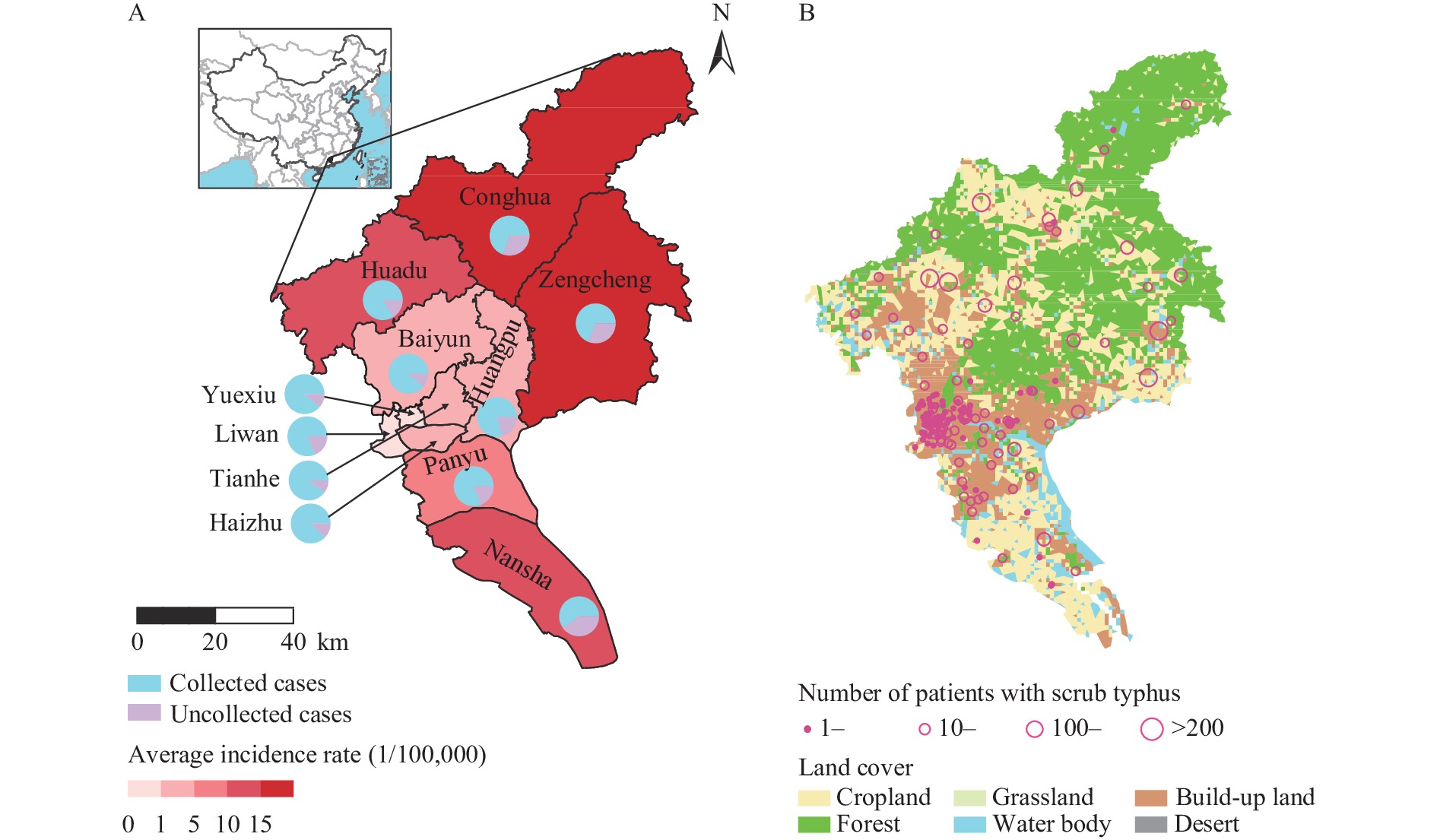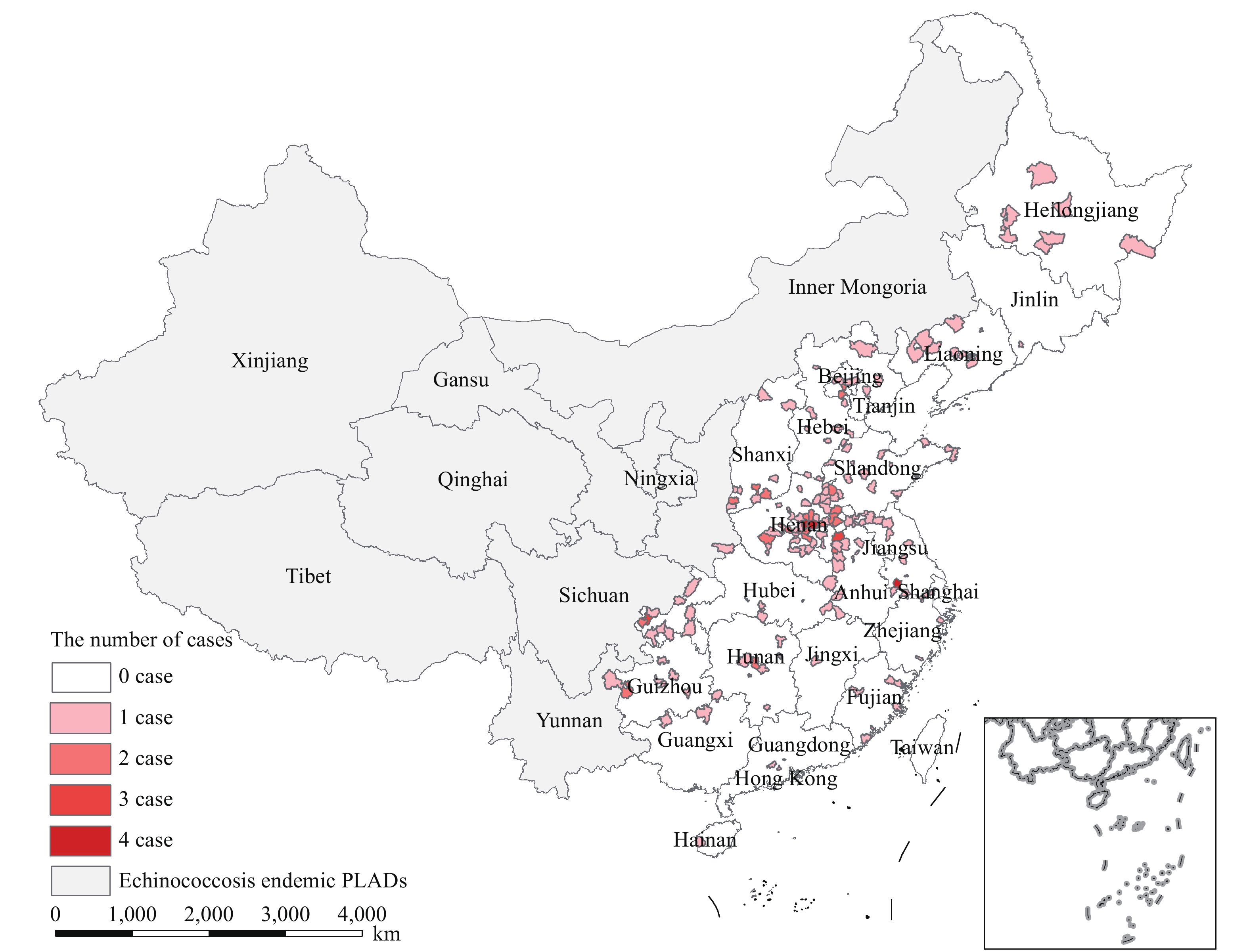2021 Vol. 3, No. 51
Scrub typhus (ST) causes public health challenges in the “tsutsugamushi triangle” in the Asia-Pacific area greater than 13 million square kilometers, affecting an estimated one million people each year.
A retrospective study based on 4,501 hospitalized patients with ST in Guangzhou City, China, described the epidemiological and clinical characteristics, laboratory findings of ST, and determined the related factors and a predictive model for severe disease.
The current study provided updated knowledge that might enable public health policymakers to formulate appropriate measures to prevent ST and medical workers to perform targeted management to recognize and treat severe ST patients.
Echinococcosis, also known as hydatid disease, is a zoonotic parasitic disease caused by the larvae of Echinococcus granulosus. Western China has one of the most severe epidemics worldwide. Echinococcosis is endemic in 370 counties of 9 provincial-level administrative divisions (PLADs) including Inner Mongolia, Sichuan, Yunnan, Tibet, Shaanxi, Gansu, Qinghai, Ningxia, Xinjiang and Xinjiang Production and Construction Corps (XPCC).
From 2017 to 2020, 244 cases were reported in 21 non-endemic PLADs. Of the cases reported in non-endemic PLADs, the majority were imported from endemic areas. Cases reported from non-endemic PLADs have been sporadic, and the number has increased in some areas.
Migrant workers and livestock from endemic areas may have contributed to the increased incidence of locally acquired infections in non-endemic PLADs, suggesting that health education among workers and livestock quarantine is important for the control of spread in non-endemic PLADs.
Oncomelania hupensis (O. hupensis) and livestock are main infection sources of schistosomiasis. The schistosome infected O. hupensis and livestock’s feces are important risk factors in the transmission of schistosomiasis.
The potential risks of schistosomiasis transmission remain prevalent, giving an early warning to local government with information on existing transmission risks. It is expected that the effectiveness and efficiency of schistosomiasis surveillance could be improved by conducting rapid risk assessment at the beginning of transmission season.
Rapid risk assessment is essential in early detection and the active monitoring of indicators of the transmission risks of schistosomiasis in endemic areas. This could work synergistically with surveillance system to minimize infections and prevent rebounds of endemic schistosomiasis outbreaks.
No live specimens of the snail Oncomelania hupensis (O. hupensis) and indigenous infected cases of schistosomiasis japonicum have been found in Guangdong Province since 1993, but live O. hupensis was found again in 2019. This study conducted O. hupensis identification and elimination.
In 2019, live O. hupensis specimens were detected by routine surveillance in areas in Qujiang of Shaoguan City and Yingde of Qingyuan City, and an emergency response was launched immediately.
The suspected habitat of O. hupensis in originally endemic areas of schistosomiasis in Guangdong is still complicated, so it is necessary to record suspected habitats comprehensively and carry out scientific routine surveillance for O. hupensis.



 Subscribe for E-mail Alerts
Subscribe for E-mail Alerts CCDC Weekly RSS Feed
CCDC Weekly RSS Feed

